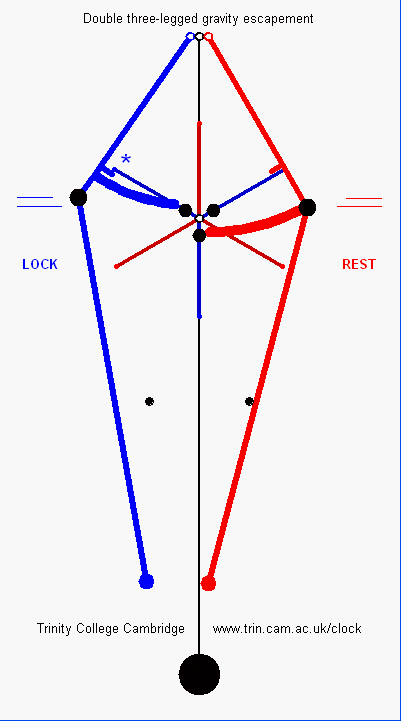
- 19 Dec 2010 [09:38]
- Bedmaker Effect, interim conclusion: 1: opening the door in the room below on a cold day causes the air flow in the pendulum chute to change (a cold downwards air flow is replaced by a warm upwards air flow) because of the chimney effect forced by the tall heated staircase in the building. 2: as the air warms up, the density and viscosity of the air both fall allowing the swing amplitude to increase. 3: The change in direction of air flow (downward to upward) causes the Going to drop (the clock slows down) because upward drag on the pendulum causes an apparent reduction in g.
- 19 Dec 2010 [09:37]
- Bedmaker Effect (continued) 2: the Going changes more dramatically [link] . What is interesting is that there is a step change in going of about -900ms/day and this occurs straight away, not at all related to the gradual temperature rise. This is clear in the scatter plot [link] (ok, there is a gradient at the expected slope due to thermal expansion, but this is after te initial step occurs. It was Dwight Elvey who made me look again at this, and I think he is right - the observed change in going could well be due to the change in air flow up the chute. If descending cold air is replaced by rising warmer air then the sudden change in direction of air flow will cause a change in Going. This has been looked at in the Theory section of the website, and in Section 4.6.4 and
- 19 Dec 2010 [09:36]
- estimate was calculated as -300ms/day per 1m/s of upward air flow. This suggests that the change in upward air flow this morning should have been around 3m/s - which is pretty fast. Certainly measurable. I will have to invest in a digital anemometer now!
- 19 Dec 2010 [09:36]
- Bedmaker Effect (continued) So, here are some observations: 1: amplitude changes linearly with temperature, as can be seen in a scatter plot [link] and the fact that the rise curve and the fall curve follow each other (ie there is no hysteresis) really suggests that the temperature sensor responds quickly to temperature change and that the amplitude measurement is due to air temperature change. The gradient is about 0.8mrad/C which agrees really well with theory for how drag varies with air density. Nothing definite yet, but the evidence for this theory is mounting.
- 19 Dec 2010 [09:35]
- Bedmaker Effect, just opening the door (no bedmaker!) on a cold morning, -4C outside. Heating on inside, really toasty. So, opening the door causes a chimney effect, forcing warm air into the pendulum chute. This temperature rise can now be seen [link] because the weather station is located in the pendulum chute itself. I have made some observations and these are in separate comments above.
Download data





